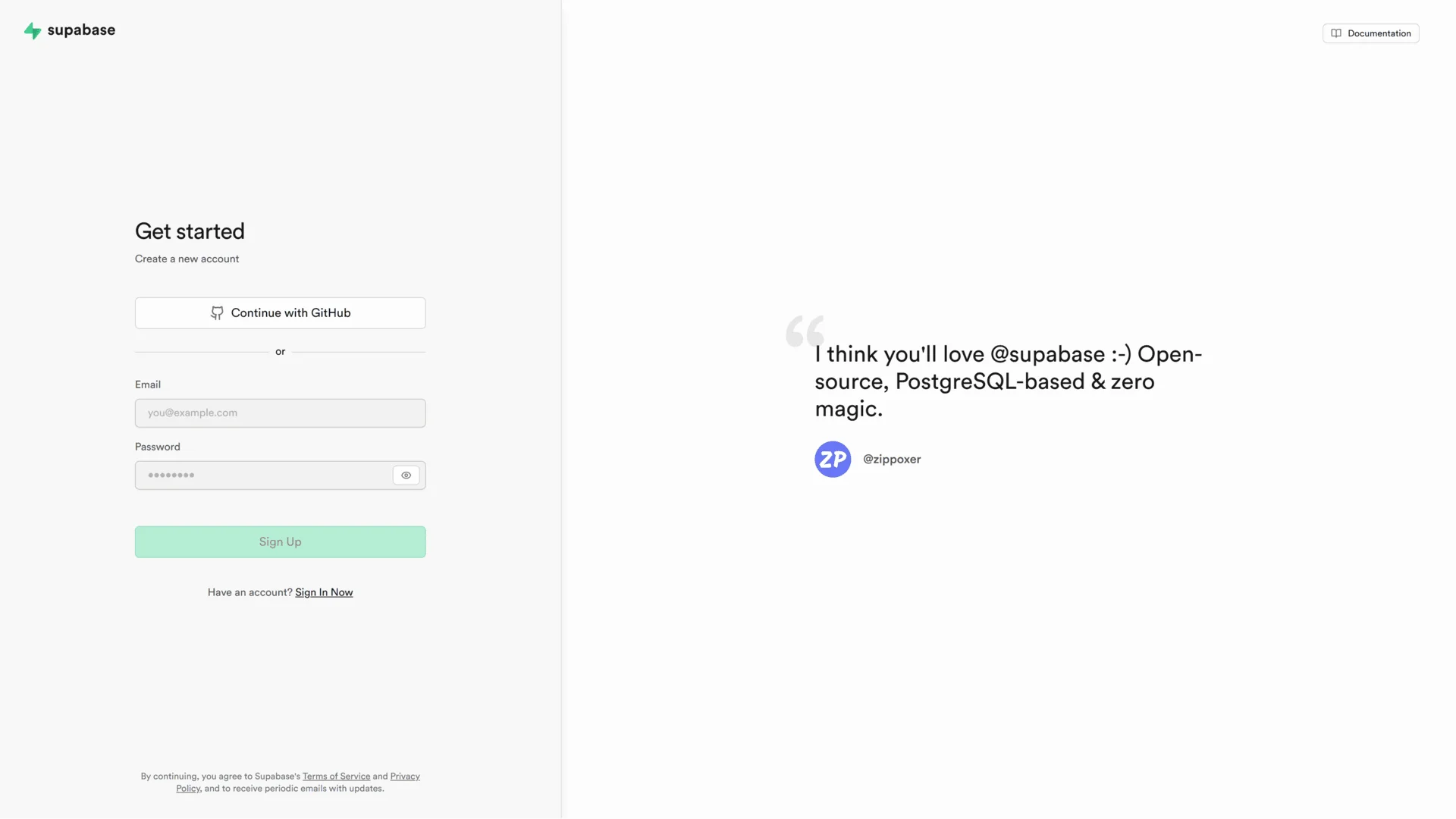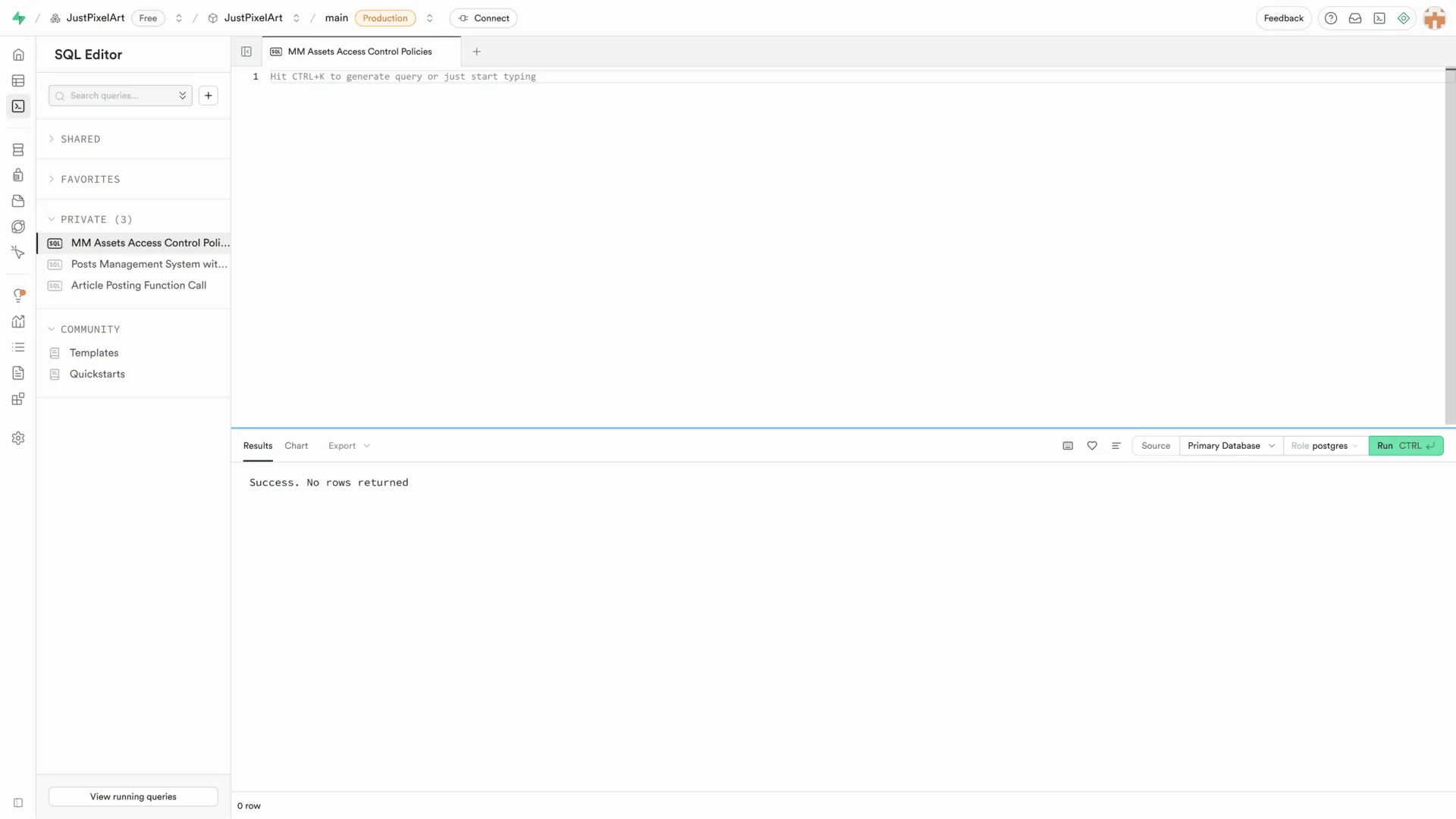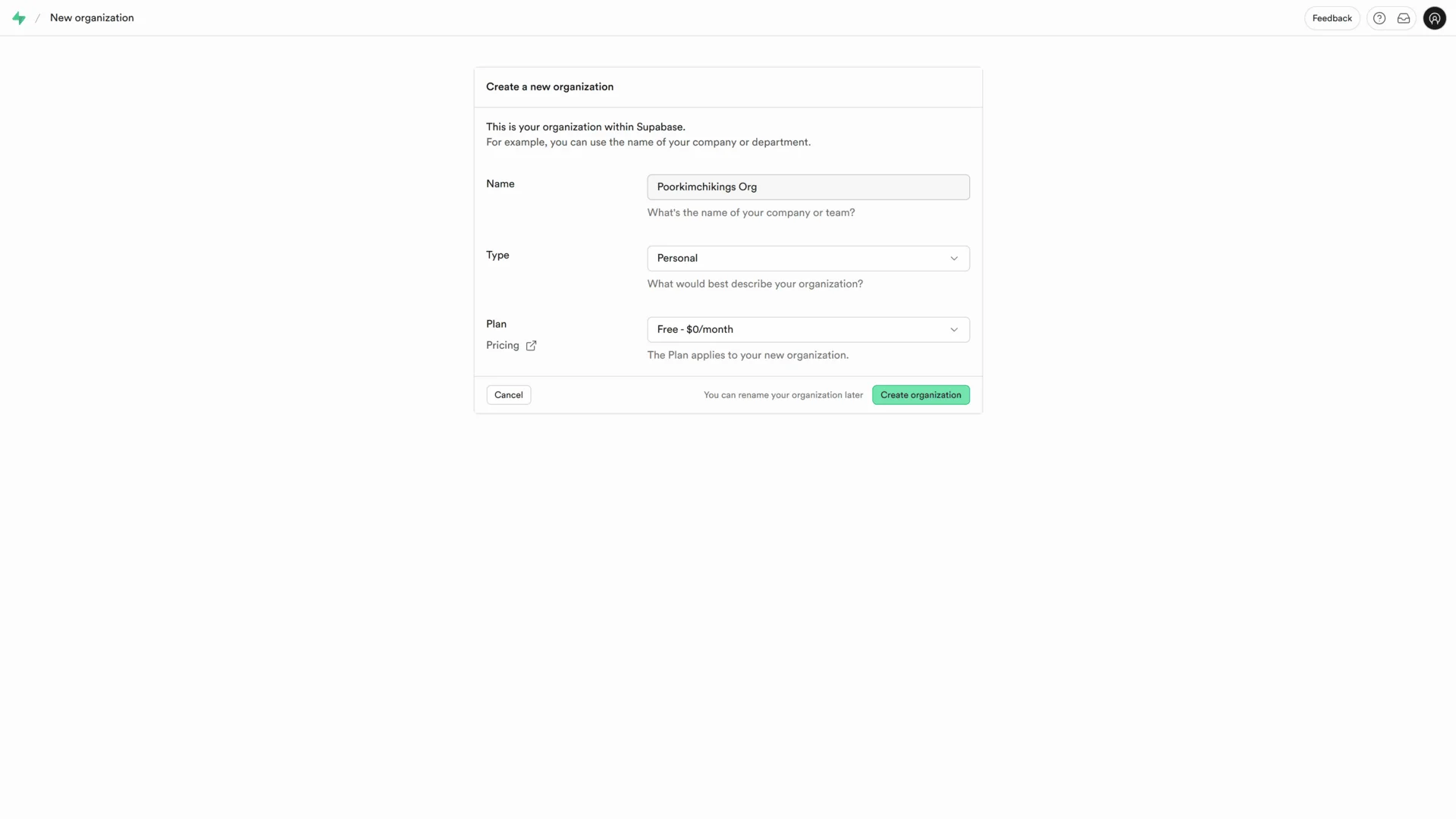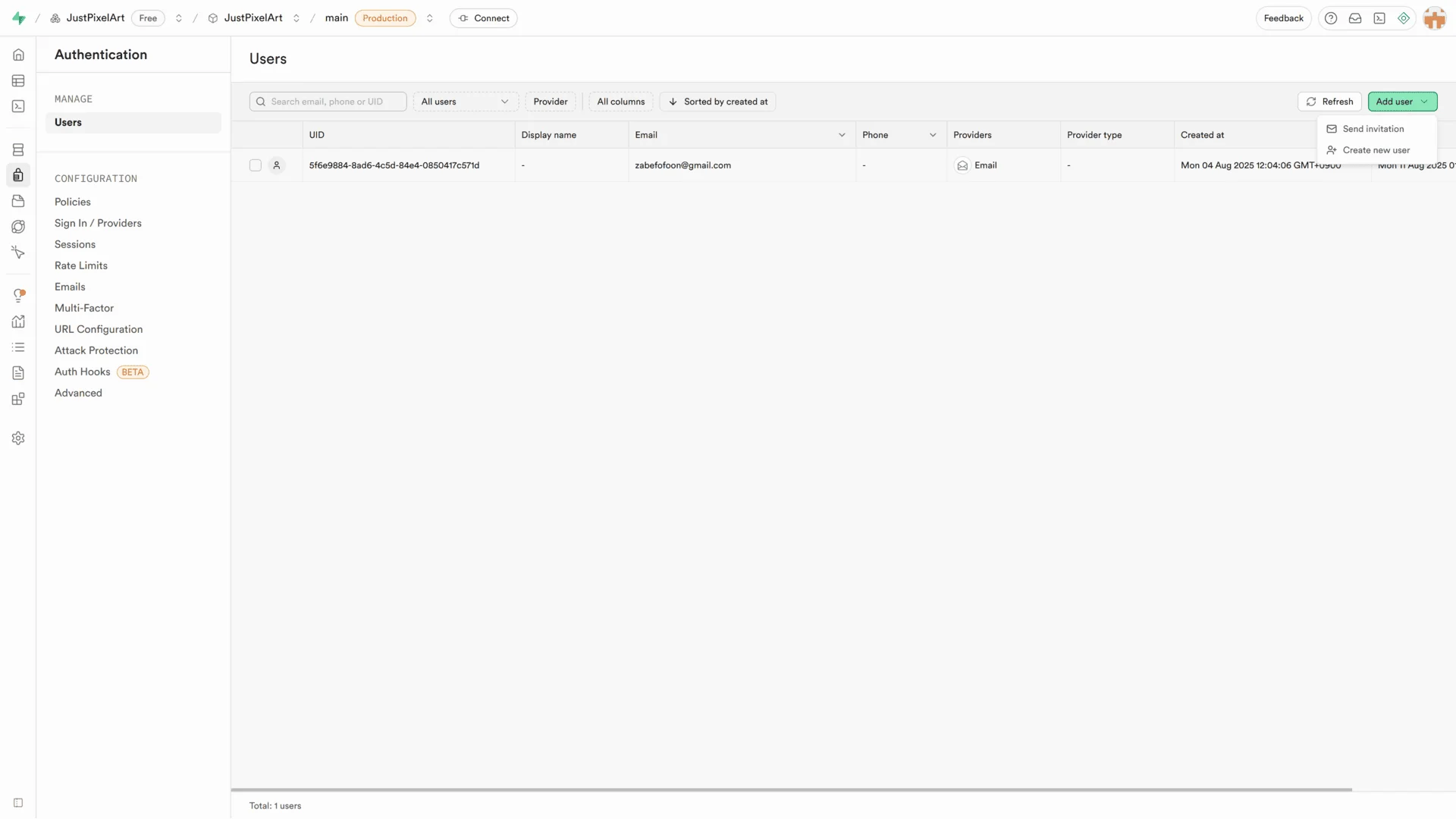Prerequisites
To use MM Base, you will need the following resources in Supabase:
mm_poststable: Stores page and content data- Admin account: Account to log in to MM Base
mm_assetsbucket: Storage for uploading images and files
1. Sign up for Supabase and create a project
If you already have a project, you can skip this step.

1-1. Sign up at Supabase.
2. Create mm_posts table and mm_assets bucket
Copy the provided SQL code and paste it into the SQL Editor.
*Before executing, note that if a table or bucket with the same name already exists, conflicts may occur.

------------------------------------------------------------
-- 1. Create table for storing content (mm_posts)
------------------------------------------------------------
create table public.mm_posts (
id int4 generated by default as identity primary key, -- Unique ID (auto-increment)
created_at timestamptz not null default now(), -- Creation timestamp
public boolean not null default false, -- Visibility flag (public/private)
title text not null, -- Post title
description text, -- Post description
image text, -- Cover image URL
start date, -- Start date
"end" date, -- End date
page_data text, -- Page content data (JSON, HTML, etc.)
path text unique, -- Unique path/slug
user_id uuid not null references auth.users(id) on delete cascade -- Owner's user ID
);
------------------------------------------------------------
-- 2. Enable Row Level Security (RLS)
------------------------------------------------------------
alter table public.mm_posts enable row level security;
------------------------------------------------------------
-- 3. Policies for mm_posts table (owner-based access)
------------------------------------------------------------
-- Allow delete only for the owner
create policy "mm_posts delete own rows"
on public.mm_posts
for delete
using (auth.uid() = user_id);
-- Allow insert only for the owner
create policy "mm_posts insert (owner)"
on public.mm_posts
for insert
with check (auth.uid() = user_id);
-- Allow update only for the owner
create policy "mm_posts update own rows"
on public.mm_posts
for update
using (auth.uid() = user_id)
with check (auth.uid() = user_id);
-- Allow read for public posts OR for the owner
create policy "mm_posts read"
on public.mm_posts
for select
using ( public OR auth.uid() = user_id );
------------------------------------------------------------
-- 4. Bucket-level policies for mm_assets storage
------------------------------------------------------------
-- Allow bucket info read for everyone
create policy "MM_ASSETS: read for all"
on "storage"."buckets"
for select
using (id = 'mm_assets');
-- Allow bucket insert only for authenticated owner
create policy "MM_ASSETS: insert for owner"
on storage.buckets
for insert
to authenticated
with check (
auth.uid() = owner
AND id = 'mm_assets'
);
-- Allow bucket delete only for the owner
create policy "MM_ASSETS: delete for owner"
on "storage"."buckets"
for delete
using (
id = 'mm_assets'
AND auth.uid() = owner
);
------------------------------------------------------------
-- 5. Object-level policies for mm_assets storage
------------------------------------------------------------
-- Allow object read for everyone
create policy "MM_ASSETS_OBJECTS: read for all"
on storage.objects
for select
using (bucket_id = 'mm_assets');
-- Allow object insert only for the owner
create policy "MM_ASSETS_OBJECTS: insert for owner"
on storage.objects
for insert
with check (
auth.uid() = owner
and bucket_id = 'mm_assets'
);
-- Allow object delete only for the owner
create policy "MM_ASSETS_OBJECTS: delete for owner"
on storage.objects
for delete
using (
auth.uid() = owner
and bucket_id = 'mm_assets'
);
3. Create an admin account
In the left-hand menu, go to Authentication, then click Add user in the top right, and select Create new user.
You can use this account to log in to MM Base.


